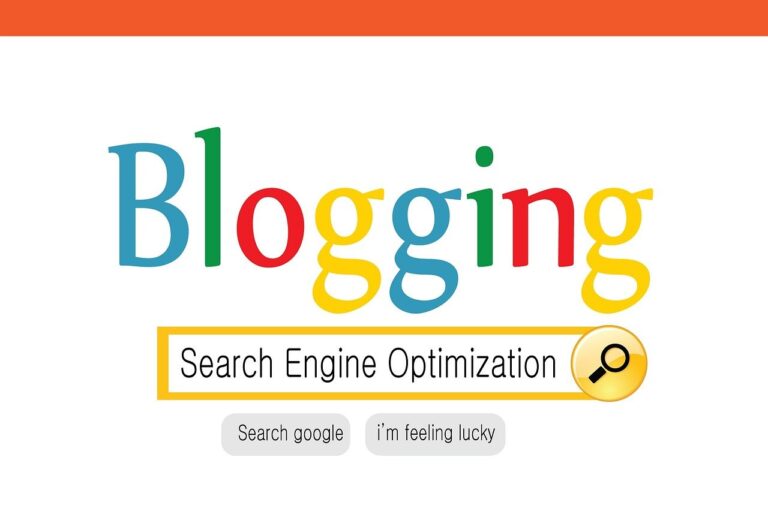Holistic education is evolving rapidly, shaping the future of learning in profound ways. As we move into a new year and beyond, educators and institutions are embracing new approaches that nurture the whole student – intellectually, emotionally, and socially. These emerging trends in holistic education focus on personalized learning experiences, integrating technology thoughtfully, and fostering adaptable skills for an ever-changing world.

You’ll find that curriculum design is shifting towards interdisciplinary approaches, blending subjects to create more meaningful connections for students. Innovative teaching methodologies are gaining traction, emphasizing project-based learning, mindfulness practices, and social-emotional development. These methods aim to prepare students not just academically, but for life’s broader challenges.
As a practitioner, staying informed about these trends is crucial for providing the best possible education to your students. By understanding and incorporating holistic approaches, you can create more engaging, effective learning environments that support students’ overall growth and well-being.
Key Takeaways
- Personalized learning and technology integration are reshaping holistic education practices.
- Interdisciplinary curricula and innovative teaching methods are becoming increasingly important.
- Practitioners must adapt to support students’ academic, emotional, and social development.
Emerging Trends In Holistic Education

Holistic education is evolving rapidly to meet the changing needs of students in an increasingly complex world. New approaches are emerging that integrate academic, social-emotional, and physical development.
Key Developments In Curriculum Design
Curriculum design in holistic education is shifting towards more personalized and flexible approaches.
You’ll see a growing emphasis on project-based and experiential learning, allowing students to explore topics that interest them deeply.
Interdisciplinary studies are becoming more common, breaking down traditional subject silos. This helps students make connections across different areas of knowledge.
Technology is being integrated thoughtfully to enhance learning without overshadowing human interaction. Adaptive learning platforms are tailoring content to individual student needs and progress.
Mindfulness and social-emotional learning are being woven throughout the curriculum, not treated as separate subjects. This supports students’ overall well-being and resilience.
Innovative Teaching Methodologies
New teaching methods are emerging that engage students more actively in their own learning process.
You’ll encounter increased use of:
- Flipped classrooms
- Peer-to-peer teaching
- Gamification of learning
- Virtual and augmented reality experiences
These approaches aim to make learning more interactive, collaborative, and relevant to real-world situations. Teachers are taking on roles as facilitators and guides rather than lecturers.
Assessment methods are evolving too. There’s a move away from standardized testing towards more authentic assessments like portfolios, presentations, and real-world problem-solving tasks.
Emotional intelligence and soft skills development are being integrated into teaching practices across all subjects.
Integrative Approaches In Holistic Education
Holistic education is increasingly embracing integrative approaches that connect different aspects of a student’s life and learning.
You’ll see schools incorporating:
- Community service and civic engagement projects
- Arts integration across the curriculum
- Outdoor education and nature-based learning
- Mindfulness and meditation practices
These approaches recognize that learning happens everywhere, not just in the classroom. They aim to develop the whole person – intellectually, emotionally, physically, and spiritually.
There’s a growing focus on cultural responsiveness and global citizenship education. This helps students understand diverse perspectives and prepare for an interconnected world.
Health and wellness are being integrated more deeply into daily school routines, recognizing their impact on learning and overall development.
Technological Advancements In Holistic Education

Digital tools and platforms are reshaping holistic education. New technologies enable personalized learning experiences, immersive environments, and AI-driven insights to support student development across multiple dimensions.
Online Learning Platforms And Tools
Online platforms have revolutionized access to holistic education resources. Learning management systems now integrate features that support social-emotional learning alongside academic content.
You can find platforms offering mindfulness exercises, goal-setting tools, and peer collaboration spaces.
Interactive tools allow students to track their progress across various developmental domains. Some platforms use gamification to encourage engagement with non-academic skills.
Holistic student development is increasingly emphasized in digital curricula. You’ll see more courses incorporating reflective activities and projects that connect academic concepts to real-world applications and personal growth.
Adaptive learning technologies tailor content difficulty and pacing to individual needs. This personalization extends beyond academics to areas like character development and wellness.
Virtual Reality And Augmented Reality Applications
VR and AR create immersive learning environments that engage multiple senses. These technologies allow students to experience historical events, explore ecosystems, or practice social skills in simulated scenarios.
You can use VR for virtual field trips that broaden cultural understanding. AR applications overlay information onto the real world, enhancing experiential learning activities.
Some programs use these technologies for mindfulness exercises and stress reduction. VR meditation spaces offer calming environments for emotional regulation.
Collaborative VR projects foster teamwork and communication skills. Students can work together on 3D design challenges or participate in virtual cultural exchanges.
AR apps support physical education by demonstrating proper form for exercises or providing real-time feedback on movement.
The Role Of Artificial Intelligence In Personalized Learning
AI algorithms analyze vast amounts of data to create tailored learning pathways. You’ll find AI-powered tutoring systems that adapt to individual learning styles and paces across various subjects and skills.
AI can transform education by providing insights into student strengths and areas for growth. Predictive analytics help identify potential challenges early, allowing for timely interventions.
Natural language processing enables AI writing assistants that provide feedback on both technical and creative aspects of student work. This technology supports language development and self-expression.
AI-driven recommendation systems suggest personalized resources for emotional intelligence, critical thinking, and other holistic skills. These systems learn from student interactions to refine their suggestions over time.
Automated assessment tools use AI to evaluate complex skills like problem-solving and creativity, providing detailed feedback to support growth in these areas.
Curriculum Design For the Future

Future-oriented curriculum design focuses on adaptability, real-world relevance, and cultivating essential cognitive skills. You’ll find an emphasis on breaking down traditional subject silos, integrating practical experiences, and fostering critical thinking abilities.
Incorporating Interdisciplinary Studies
Interdisciplinary approaches are becoming crucial in curriculum design. You’ll see a shift from isolated subject areas to integrated learning experiences. This integration helps students understand complex real-world issues from multiple perspectives.
Sustainable learning and education principles are being woven into curricula across disciplines. You’ll find environmental science concepts in economics courses, or art history integrated with cultural anthropology.
Consider these strategies for interdisciplinary integration:
- Thematic units that span multiple subjects
- Project-based learning with cross-curricular elements
- Team-teaching collaborations between instructors from different fields
Emphasis On Practical Skills And Hands-On Learning
Future curricula prioritize experiential learning and practical skill development. You’ll notice a move away from purely theoretical knowledge towards applied learning experiences.
Hands-on components to consider include:
- Industry partnerships for real-world projects
- Simulations and role-playing exercises
- Maker spaces and labs for prototyping and experimentation
Digital literacy and technological proficiency are increasingly embedded across subjects. You’ll find coding exercises in art classes or data analysis in literature courses.
Developing Critical Thinking And Problem-Solving Abilities
Curricula are evolving to place greater emphasis on higher-order thinking skills. You’ll see a focus on developing students’ ability to analyze, evaluate, and create rather than simply memorize information.
Key strategies include:
- Open-ended inquiry-based learning tasks
- Socratic questioning techniques in discussions
- Real-world case studies and scenario analyses
Holistic approaches to educational innovation emphasize cultivating adaptable problem-solving skills. You’ll find curricula designed to enhance cognitive flexibility and creative thinking across disciplines.
Consider incorporating regular reflection exercises and metacognitive practices to help students develop self-awareness of their thought processes.
Innovative Teaching Methodologies
Educators are adopting new approaches to engage students and foster holistic development. These methods prioritize active participation, collaboration, and emotional well-being to prepare learners for future challenges.
Student-Centered Learning Approaches
Creativity-friendly classrooms empower students to take ownership of their education. You can implement project-based learning, allowing students to explore topics that interest them. Personalized learning plans cater to individual strengths and needs.
Flipped classrooms reverse traditional teaching models. Students review materials at home and engage in active problem-solving during class time.
Gamification introduces game elements to increase motivation and engagement. You might use digital platforms or create analog games to reinforce key concepts.
Inquiry-based learning encourages students to ask questions and seek answers independently. This approach develops critical thinking skills and fosters curiosity.
Collaborative And Experiential Learning
Group projects and peer teaching promote teamwork and communication skills. You can assign roles within groups to ensure equal participation and diverse perspectives.
Holistic education emphasizes real-world applications. Field trips, internships, and community service projects provide hands-on experiences.
Virtual and augmented reality technologies offer immersive learning environments. These tools can simulate historical events or scientific phenomena.
Problem-based learning presents students with complex, open-ended challenges. This method develops problem-solving skills and encourages creative thinking.
Cross-disciplinary projects integrate multiple subjects, helping students understand connections between different areas of study.
Mindfulness And Emotional Intelligence In the Classroom

Integrative approaches in holistic education blend diverse practices to nurture students’ intellectual, emotional, and social growth. These methods emphasize interconnectedness and aim to develop well-rounded individuals prepared for life’s challenges.
Blending Traditional And Modern Practices
Holistic educators combine time-tested pedagogies with innovative techniques to create a comprehensive learning experience. You’ll find traditional subjects integrated with modern skills like critical thinking and digital literacy. This approach helps students see connections between different areas of knowledge.
Project-based learning often serves as a bridge between old and new. It allows you to apply traditional academic concepts to real-world scenarios using current technologies. For example, a history project might involve creating a digital timeline or virtual museum exhibit.
Mindfulness practices, rooted in ancient traditions, are now incorporated into daily routines to enhance focus and emotional regulation. These techniques help you manage stress and improve your overall learning experience.
Emphasizing Whole-Person Wellness
Holistic education recognizes that physical, mental, and emotional health are crucial for academic success. You’ll encounter curricula that address all aspects of your well-being.
Instructional designs now include elements of physical education, nutrition education, and stress management techniques. These components are woven into your daily schedule, not treated as separate subjects.
Social-emotional learning (SEL) plays a central role. You’ll develop skills like self-awareness, empathy, and relationship management alongside traditional academic subjects. This integration helps you navigate personal and professional challenges more effectively.
Arts and creativity are valued as essential components of your development. Engaging in creative activities fosters self-expression and enhances problem-solving skills across all areas of study.
Community-Based Learning And Social Responsibility
Holistic education extends beyond classroom walls, emphasizing your role in the broader community. You’ll participate in service-learning projects that connect academic concepts with real-world issues.
These experiences help you develop a sense of civic responsibility and global awareness. You might work on local environmental projects or collaborate with international students on global challenges.
Collaborative learning environments encourage you to work in diverse teams, mirroring real-world professional settings. This approach enhances your communication skills and cultural competence.
Digital platforms are used to connect you with experts and peers worldwide, expanding your perspective and preparing you for an interconnected global society.
Actionable Insights For Practitioners

Implementing holistic education practices requires staying informed, expanding offerings, and developing a competitive edge. Focus on these key areas to enhance your approach and impact as a holistic educator.
Staying Updated With Industry Trends
Subscribe to leading journals in holistic education to keep abreast of the latest research and best practices.
Attend conferences and workshops focused on holistic approaches to learning and development.
Join professional networks and online communities dedicated to holistic education. These platforms offer opportunities to share experiences and learn from peers around the world.
Engage in ongoing professional development courses that explore emerging topics in holistic education. This can include areas like mindfulness in the classroom or integrating social-emotional learning into curricula.
Consider partnering with researchers to participate in studies on holistic education effectiveness. Your practical insights can contribute valuable data to the field.
Enhancing Educational Offerings
Conduct regular assessments of your current programs to identify areas for improvement.
Solicit feedback from students, parents, and colleagues to gain diverse perspectives.
Develop a holistic curriculum that addresses cognitive, emotional, social, and physical aspects of learning. Incorporate activities that promote creativity, critical thinking, and self-reflection.
Implement experiential learning opportunities that connect classroom concepts to real-world applications. This can include community service projects, internships, or nature-based learning experiences.
Integrate technology thoughtfully to support holistic learning goals. Use digital tools to enhance collaboration, personalize instruction, and provide access to diverse resources.
Building A Competitive Edge In Holistic Health Education
Differentiate your offerings by specializing in unique approaches or philosophies within holistic education. This could involve focusing on specific age groups or learning needs.
Develop partnerships with local businesses, healthcare providers, or community organizations to offer students practical experiences and networking opportunities.
Create a strong online presence to showcase your holistic education programs. Use social media and a professional website to share success stories and highlight your unique approach.
Invest in ongoing training for your staff to ensure they are equipped with the latest skills and knowledge in holistic education practices.
Consider obtaining certifications or accreditations specific to holistic education to enhance your credibility and marketability.
Conclusion

Holistic education continues to evolve, emphasizing the development of the whole student. You’ll find a growing focus on social-emotional learning, mindfulness practices, and environmental awareness in classrooms worldwide.
Technology integration is becoming more prevalent, with digital tools enhancing holistic approaches. Virtual reality and artificial intelligence are opening new avenues for experiential learning and personalized instruction.
Cultural responsiveness and inclusivity are gaining prominence. You’ll need to adapt your teaching methods to support diverse student populations and promote global citizenship.
Interdisciplinary learning is on the rise. You’ll be encouraged to break down subject silos and create more interconnected curricula.
Assessment practices are shifting towards more comprehensive evaluations. You’ll likely use portfolios, project-based assessments, and self-reflection tools to gauge student growth across multiple dimensions.
Collaboration between educators, families, and communities is becoming essential. You’ll find yourself engaging more with various stakeholders to create a supportive learning ecosystem.
As you move forward, stay flexible and open to new ideas. Continuous professional development will be crucial to keep pace with the rapidly changing landscape of holistic education.
Frequently Asked Questions
Holistic education continues to evolve, integrating new technologies and addressing emerging challenges. Practitioners are adapting to shifts in teaching methodologies and institutional priorities.
What advancements in technology are shaping higher education practices?
Artificial intelligence and virtual reality are transforming learning experiences. AI-powered adaptive learning platforms personalize education, while VR simulations provide immersive training opportunities.
Cloud-based collaboration tools enable seamless remote learning and global partnerships between institutions. Data analytics help educators track student progress and optimize curriculum delivery.
How does holistic education address the top risks in higher education for 2024?
Holistic approaches mitigate enrollment declines by offering more engaging, relevant curricula. They address mental health concerns through social-emotional learning and wellness programs.
Financial sustainability is improved by developing diverse revenue streams and industry partnerships. Holistic models also enhance equity and inclusion efforts, reducing barriers to access and success.
What are the core components of the holistic education model currently in use?
Integrated curricula connect disciplines for deeper learning. Experiential education emphasizes hands-on projects and real-world applications.
Social-emotional development is prioritized alongside academic skills. Community engagement and service learning foster civic responsibility and global awareness.
Which emerging trends in education are pivotal for practitioners to understand as we approach 2023?
Micro-credentials and stackable degrees offer flexible pathways to qualifications. Competency-based education focuses on mastery rather than seat time.
Sustainability and climate education are increasingly integrated across disciplines. Artificial intelligence is being leveraged for personalized learning and administrative efficiency.
In what ways are current educational changes influencing traditional teaching methodologies?
Flipped classrooms and blended learning models are becoming more prevalent. Project-based and inquiry-driven approaches replace passive lectures.
Formative assessment and continuous feedback loops enhance learning outcomes. Collaborative and peer learning strategies foster teamwork and communication skills.
What do the latest Educause trends indicate about the direction of higher education for 2024?
Hybrid and flexible learning models will continue to expand.
Cybersecurity and data privacy concerns will drive investments in digital infrastructure.
Artificial intelligence will play a larger role in student support and administrative tasks.
Workforce development partnerships will align curricula with industry needs.







